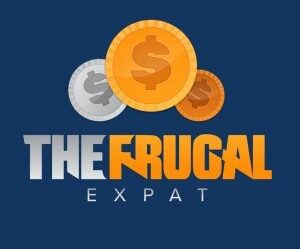Market downturns come and go, but being ready with your portfolio is essential. Most people do not have the time or want to study individual stocks that can create a portfolio, so they go with a more straightforward route, the ETF. An Exchange Traded Fund, ETF, combines different stocks that can be sold on the market.
These 7 safe ETFs can help shield your portfolio in a market downturn.
1. SPY: SPDR S&P 500 Trust ETF
SPY is the first ETF created. It came onto the market in 1999 and is now the largest ETF you can invest with. One thing that makes it so great is that it tracks the S&P 500 index. It is an index comprising the top 500 companies in the U.S.
Throughout the years, the market has averaged around 10%. That means the ETF continues to strive forward even in the lowest downturns, such as the Dot.com crash, the Great Financial Crisis, and even the 2022 market downturn.
The only con is that it tracks the market. As the market goes up and down, so does SPY. If you had a choice between a group of stocks you may pick, and those of the market, SPY would be a great way to diversify your money.
2. VTI: Vanguard Total Market Index Fund ETF
VTI is similar to SPY, but it holds all the companies instead of just holding the top 500 companies in the U.S. VTI is a total market ETF with a collection of all the companies on the U.S. stock exchange. It came into existence in 2006 and is the oldest ETF from Vanguard.
With VTI having a collection of small-cap and mid-cap companies, it can have more diversity than those in the S&P 500. In 2022, many of the small caps were not hit as heavily as the larger companies. VTI did have a similar fall as the S&P 500, but it has often done better with more significant exposure to companies that still need to qualify to be on the S&P 500.
It is a good core ETF to hold in your portfolio.
3. SCHD: Schwab U.S. Dividend Equity ETF
SCHD is a dividend growth ETF from Schwab. The ETF is built with value companies like Home Depot, Coke Cola, AbbVie, etc. The great thing about SCHD is that the companies provide everyday products that people use all the time. As the market dips, people will continue to use certain products.
In 2022 the market dipped around 19%, and SCHD only went down to 5-6%. That is because of their excellent yield of a little over 3% and the fact that the portfolio is built to withstand market turbulence.
If you are looking for a safe investment to hold as the markets have downturns, SCHD could be an asset to keep in your portfolio.
4. QQQ: Invesco QQQ Trust
QQQ is a growth ETF. It tracks the Nasdaq 100, which is comprised of growth companies. Most people would stay away from growth companies because their portfolios may see big dips in downturns.
QQQ is no different, but with 100 different companies in the ETF, there is some diversification. The good part about this ETF is that when it is down, an investor could load up on more shares, hoping the market will see better days.
This can be seen with the Dot.com crash and even when the market went down in 2022. The tech industry was hurt big, but people loaded up on tech companies and QQQ. Then as the market started to get back up, the ETF saw a significant rise. In 2022, the Nasdaq was down 34%, and in 2023, the Nasdaq went up much higher giving those patient investors a significant rise in their portfolio. So if you started to buy QQQ when the price was down, then the money you are seeing will rise quickly.
5. VIG: Vanguard Dividend Appreciation ETF
VIG is an excellent dividend ETF to hold in your portfolio if you are looking for dividend-yielding companies with a known history of increasing their dividends for over ten consecutive years. These are the Aristocrats and future Aristocrats of the dividend-paying stock world.
The yield may not be better than SCHD or VYM, but VIG does a great job identifying future dividend Aristocrats to add to their portfolio. That means they are adding great companies like Microsoft and Apple to their portfolio. Now in up markets when these tech giants could be soaring, you will not see the fund zoom due to its rules of only allowing a max of 4% concentration in the ETF.
With over 300 different companies in this ETF, you will have a high diversification and less concentration than the top 10 companies; you get a well-balanced fund that seeks good price appreciation and a reasonable dividend yield. This type of ETF can help shield your portfolio in market downturns.
Related: SCHD vs VIG: Which High Growth Dividend ETF Wins?
6. DGRO: iShares Core Growth Dividend ETF
Concentration in one sector can devastate a portfolio if that sector collapses. We all remember how the banking industry took a deep dive in 2008. If you are looking for a good dividend ETF that is evenly split among different sectors, DGRO could be that ETF for your portfolio.
Market turndowns happen, and it is always best to be prepared. DGRO is a very diverse ETF that tries to split the assets among ten different sectors evenly. It comprises over 413 different stocks, and each stock has a history of increasing its dividend over five years consecutively.
For a low-cost dividend ETF like DGRO, you get a good yield of 2.70% and a low cost of 0.08% for your expense ratio. The fund is close to the S&P 500 and holds popular tech companies like Apple and Microsoft. On the other hand, it also contains many valuable companies in the Financial and Healthcare sectors allowing the portfolio to balance growth and value.
7. VXUS: Vanguard Total International Stock Market ETF
Vanguard creates many different ETFs to help people make a well-diversified portfolio. One of the popular ETFs is the Vanguard Total International Stock Market ETF. It is an ETF that many people would add to their 3-Fund portfolios.
It also allows an individual investor to have assets outside the U.S. market. These companies allow investors to have a piece of everything in the world. That means you can now have a part of Toyota, TSMC, Samsung, Nestle, and many other world companies that can be hard to find on the U.S. market.
Related: VEU vs VXUS: Which is the Best International ETF?
Final Thoughts:
As you create a portfolio, look at diversification in your assets. Market downturns happen, and with diversification, you will have the ability to ride out many different storms. Technology and the growth sector could hit rock bottom, but you may have some dividend ETFs to help ride the wave. These ETFs can help you prepare your portfolio in case of any bad outcome in the market. It is better to be prepared for the long term.

I’m Steve. I’m an English Teacher, traveler, and an avid outdoorsman. If you’d like to comment, ask a question, or simply say hi, leave me a message here, on Twitter (@thefrugalexpat1). Many of my posts have been written to help those in their journey to financial independence. I am on my journey, and as I learn more I hope to share more. And as always, thanks for reading The Frugal Expat.







